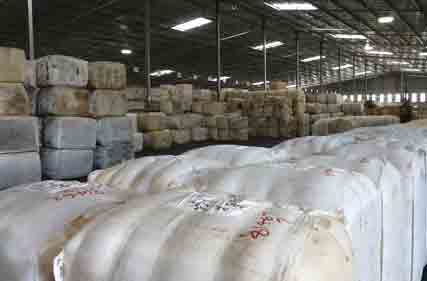 Merino Fleece experienced falls on both sale days with the same slowing of the falls in the MPG’s evident on Wednesday. Merino Fleece experienced falls on both sale days with the same slowing of the falls in the MPG’s evident on Wednesday.
Falls ranged between 20-100c with the support dominated by the large Chinese top makers, however they were pushed for quantity from the local Exporters with orders for India and possibly Europe. Week S51: 21/06/2023 The EMI closed the week on 1139c down 35c at auction sales in Australia last week. 85.2% of the 28,484 bale offering cleared to the trade as producers continued to take up the right of refusing the prices on offer even after 10% of the original offering was withdrawn before sale. The difficulty of selling wool (as reported by wool exporters and processors) has increased despite the low price basis established this week. Normally we have seen some price support after a few weeks of lower prices, however the past few months have really damaged the short and medium term hopes of a price recovery this side of Christmas. Merino Skirtings mimicked the fleece counterparts washing off similar price percentages. Crossbreds were relatively stable with very low quantities on offer in Sydney and majority of the lots offered being Melbourne. Local Exporters pushed the Chinese processors and Indent operators on the skirting types. |
| Merino Cardings also saw some price support emerging with a 2c rise experienced in Sydney and an 8c loss in Melbourne. Not a convincing recovery by any stretch of the imagine, however I believe the prices were low enough for traders to start taking stock.
Whilst the wool market has recorded another sharp fall and its 7th straight sale week without a price increase, the immediate outlook has become one of more unknowns than knowns. As I have learned this week some processed wool (Scoured and Top) is now being traded on to the next pipeline stage at substantially reduced price levels in an attempt to clear out their expiring letters of credit. I anticipate we will move through the next 3 sales before the July recess with little or no change to this negative sentiment. As to when we may see a price recovery my best guess is late spring however I believe it could be as late as early 2024. There is a chance that some Topmakers may convert their supply source from the merino combing types to crossbred production. The thought process here is to minimise the mill operation costs whilst there is low or no demand. At this point there is little confidence in any price recovery emerging from the trade. Wool producers face a really tough time over the next 4-6 months whilst the current inflationary pressures on our major northern hemisphere consumers. Watch out for the Moses & Son market ready wool forum webinar series coming to you soon. ~Marty Moses |
